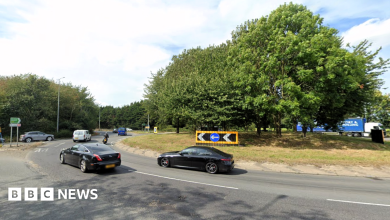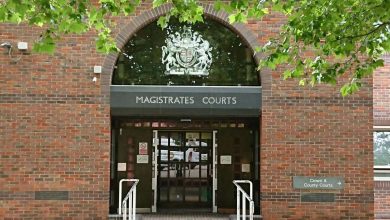Parent angered as safeguarding investigation into Sandringham Church Reverend Dr Paul Williams is dismissed

Royal Church Controversy: Safeguarding Concerns at Sandringham’s St Mary Magdalene
A troubling situation has unfolded at St Mary Magdalene Church in Sandringham, where the royal family traditionally worships, particularly during Christmas celebrations. A concerned parent has expressed profound disappointment after Reverend Canon Paul Williams was cleared of misconduct allegations following a safeguarding investigation. The case centered on claims that Rev. Williams had invited two choir girls into the rectory without another adult present—a potential violation of safeguarding protocols designed to protect children. Despite the parent’s conviction that boundaries were crossed, both an initial investigation by the Bishop of Norwich, Graham Usher, and a subsequent appeal reviewed by a senior judge found no evidence of wrongdoing on the reverend’s part. The Diocese of Norwich has maintained that “no concerns were found” after thorough examination of the allegations.
The aftermath of this controversy has reportedly had significant repercussions for the church community, particularly affecting the church choir that regularly performs during royal visits. According to the concerned parent, who remains anonymous to protect their family’s privacy, choir attendance has plummeted dramatically since the group resumed activities in September following their summer break. What was once a robust choir of approximately 25 members has allegedly dwindled to just six participants, raising concerns about the upcoming Christmas services when King Charles makes his traditional appearance at the church. The parent voiced particular worry about how the choir will manage during the high-profile royal visit in December, asking pointedly: “What is going to happen at Christmas?” This dramatic reduction in membership suggests a fractured community trust that extends beyond the immediate parties involved in the allegations.
The parent’s frustration stems not just from the outcome of the investigation but from what they perceive as a lack of accountability from Rev. Williams regarding the February incident. Despite the official clearance from church authorities, the parent remains adamant that the reverend’s actions constituted a breach of safeguarding protocols, stating unequivocally: “What he did was wrong, and it did break safeguarding terms.” Their dismay appears compounded by the absence of any explanation that would justify the reverend’s decision to invite the children into the rectory without proper supervision. The parent expressed that in any other context—”If it were a neighbour who did this to my child”—they would have approached law enforcement directly rather than church authorities, highlighting their view of the seriousness of the alleged boundary violation.
Rev. Williams holds a position of significant visibility within the royal sphere, regularly greeting King Charles and Queen Camilla during their church attendances, particularly during the Christmas season at Sandringham. Photos show him accompanying the royal couple, underscoring his prominent role at this historically significant royal church. This visibility makes the controversy particularly sensitive, as it involves not just any parish church but one intimately connected with the monarchy and royal traditions. The concerned parent pointedly questioned whether King Charles is even aware of the situation unfolding “at his own doorstep,” suggesting an expectation that royal awareness might prompt different handling of the matter. The implied question raises interesting considerations about the intersection of royal patronage, church governance, and community accountability in situations involving safeguarding concerns.
The Diocese of Norwich has maintained a straightforward position throughout this controversy, emphasizing the thoroughness of their investigation process and the definitive nature of the findings. Their official statement—”An allegation was made which was considered by a senior judge on appeal and no concerns were found”—reflects confidence in their handling of the matter. However, this position stands in stark contrast to the parent’s continued insistence that proper protocols were not followed and that insufficient accountability has been demonstrated. This gap in perception highlights the often challenging nature of safeguarding cases, where institutional processes and personal experiences may lead to fundamentally different conclusions about the same events. The parent’s continuing public concern suggests that despite the official closure of the investigation, emotional closure remains elusive for at least some members of the church community.
This situation illuminates broader questions about how religious institutions handle safeguarding concerns, especially in high-profile settings with royal connections. While the church has followed its established procedures and cleared Rev. Williams through multiple levels of review, the aftermath suggests that procedural resolution doesn’t necessarily translate to community healing. The dramatic drop in choir participation indicates that perceptions matter as much as official findings when it comes to maintaining community trust. As Christmas approaches, the practical impact of this controversy will become increasingly visible, potentially affecting not just church services but also the traditional royal Christmas experience at Sandringham. Whether this situation will prompt any reconsideration of safeguarding practices, communication approaches, or community restoration efforts remains to be seen, but what’s clear is that even after official resolution, the repercussions of such allegations can continue to reverberate through church communities and the institutions they serve.








